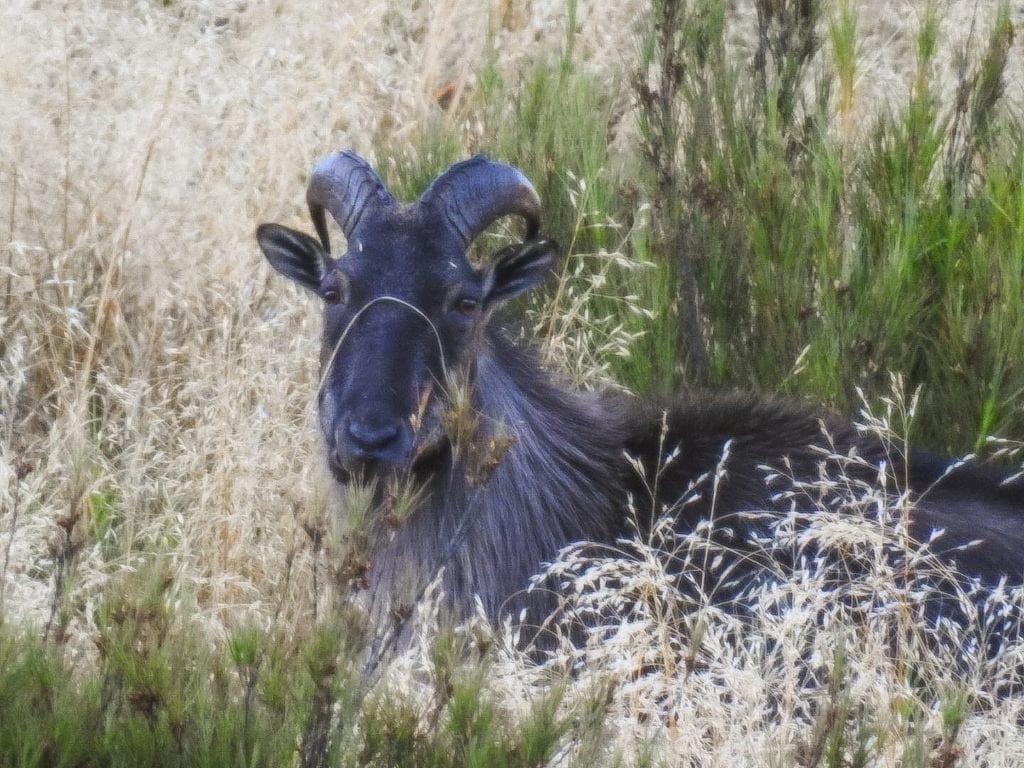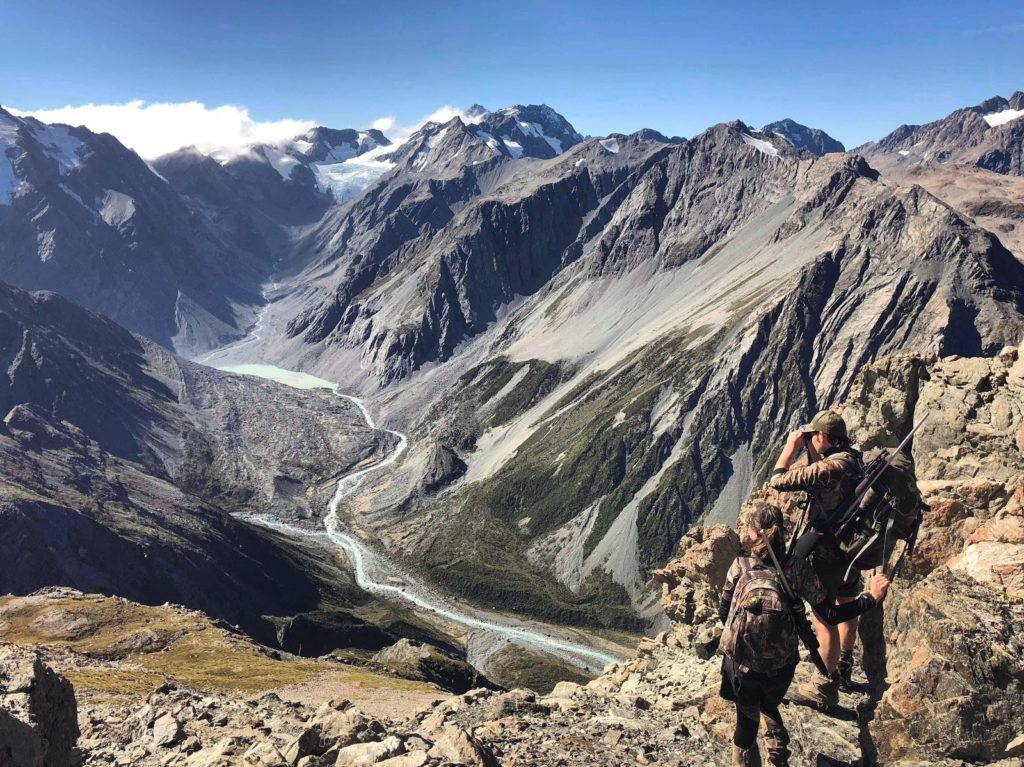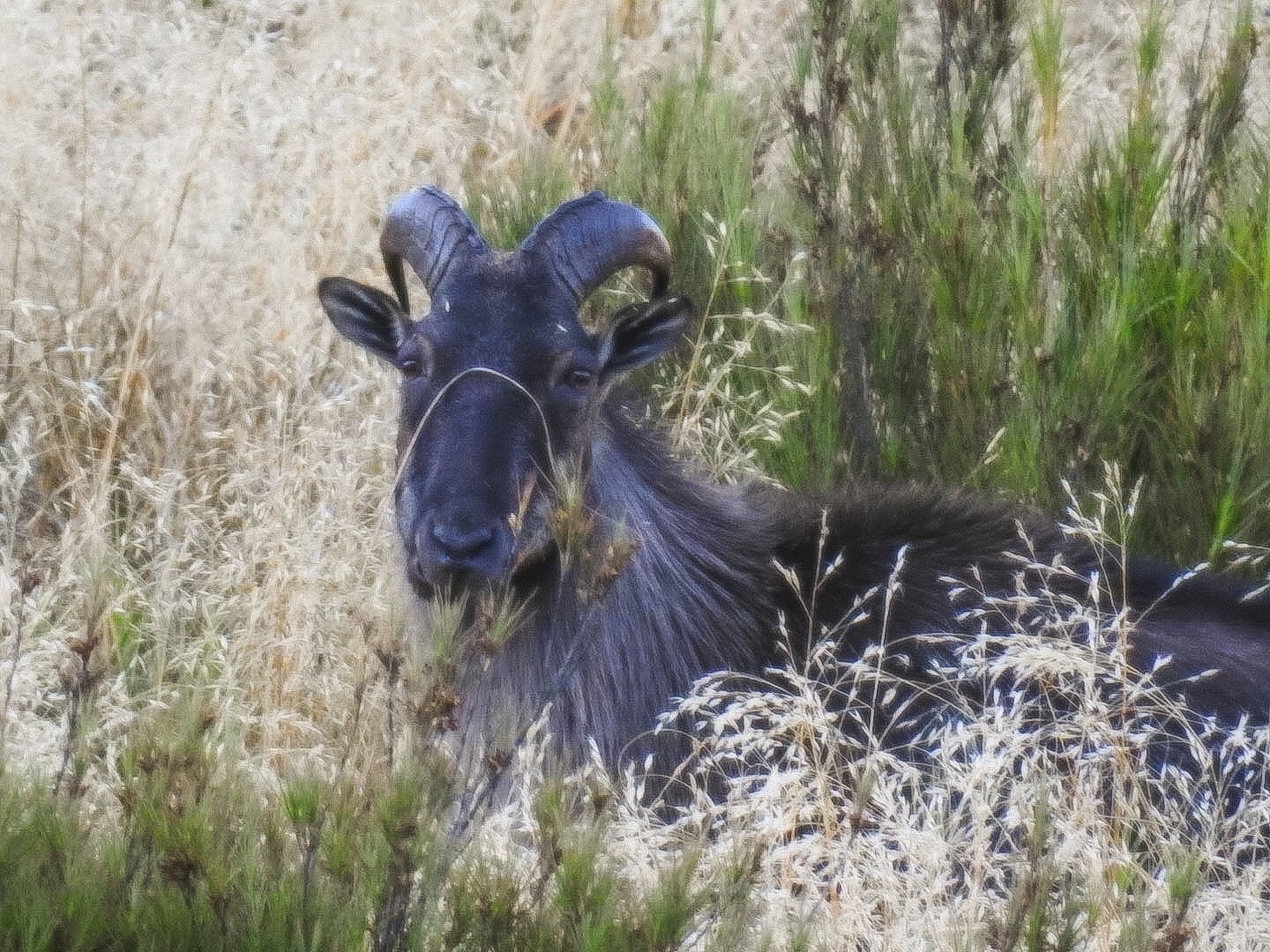In 1904, the Duke of Bedford gifted six Himalayan tahr to the government of New Zealand. It was meant to be eight, but two escaped before shipping. As six of the tahr were on their way to New Zealand, one of them jumped off the boat leaving only five tahrs to arrive in Wellington. Not long after arriving, the tahr were released in the Aoraki/Mt. Cook area. Five years after releasing the original five tahrs, the Duke gifted eight more. They all arrived without complication and were released in the same area as the previously gifted tahr. With no natural predators in the area, the population increased, producing the current population.

Today, we are fighting the New Zealand government and the Department of Conservation (DOC) over the population number of tahr and their decision to cull mature and juvenile bulls and nannies. Their plan includes five hundred hours of helicopter flying time, leaving the dead tahr bodies on the hill to rot.
This plan is to completely eliminate the tahr in New Zealand.
Tahr, in their native habitat in the Himalayas in southern Tibet, northern India, and Nepal, is on the verge of becoming extinct. The DOC has not done the necessary research to create a more reasonable plan. They have flown over land where there is a higher population of tahr and have made the assumption that all areas will hold the same, random, number of tahr. At the moment DOC has no exact number of tahr on the hill.
After culling out young bulls and nannies two years ago, there has been an obvious decline in numbers, especially nannies. On one of our latest tahr hunts, we counted forty bulls to two nannies over a week of hunting. If the female population is reduced, the population will decrease dramatically as nannies only have one kid a year. It is possible for nannies to have twins and triplets, but it is very rare.

Tahr are a wonderfully magnificent animal that many people dream of traveling to New Zealand to hunt. Stopping DOC and the government from culling the tahr is not just about hunting. It's about protecting a species from going extinct and maintaining a population that brings a lot to our little country. From creating jobs for thousands of people to drawing tourists; from putting money back into our economy to putting meat on our tables. Tahr mean a lot to not only to myself but to every person around me. They aren't just another animal. They are the kings of our mountains and are magnificent animals that can go places no human should ever go.
Commonly Asked Questions About the New Zealand Tahr:
What is a New Zealand Tahr?
The New Zealand Tahr (Hemitragus jemlahicus) is a large, mountain-dwelling ungulate resembling a goat. It has distinctive curved horns and a shaggy coat, adapted to the alpine environment.
How much does a New Zealand Tahr hunt cost?
The cost of a New Zealand Tahr hunt varies widely, depending on factors such as location, outfitter, and the length of the hunt. On average, it can range from $5,000 to $12,000.
What does tahr taste like?
Tahr meat is often described as lean and flavorful. It has a taste similar to venison, with a slightly gamey flavor. The meat is versatile and can be prepared in various ways, such as grilling, roasting, or stewing.
Why were tahr introduced to New Zealand?
Tahr were introduced to New Zealand in the early 20th century for hunting purposes. They were brought from the Himalayas to provide a challenging game species for hunters. However, their population has since become a conservation concern due to their impact on native vegetation.




